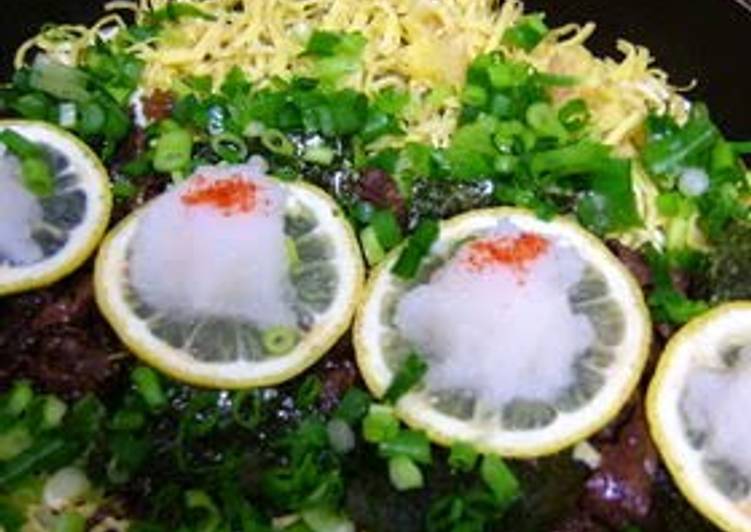Kawara Soba - Roof Tile Noodles - My Perfect Recipe!. It consists of cha-soba, (tea noodles) and various toppings that are served on a heated on a roof tile! The kawara are the pretty tiles you can see on the Japanese traditional Beef, egg, seaweed, grated daikon radish, and lemon are placed atop flavorful tea noodles and served with a warm dipping sauce. Cha-soba cooked on a real kawara tile.
 Try them in salads, stir-fries, soups, and more.
This one-pot recipe is pure genius: you cook the shrimp in boiling water, then add the soba before it's done so that the soba.
Japanese Recipes Japanese Food Red Chili Peppers Soba Noodles Great Recipes Cabbage Tasty Stuffed Peppers.
You can have Kawara Soba - Roof Tile Noodles - My Perfect Recipe! using 16 ingredients and 17 steps. Here is how you achieve that.
Try them in salads, stir-fries, soups, and more.
This one-pot recipe is pure genius: you cook the shrimp in boiling water, then add the soba before it's done so that the soba.
Japanese Recipes Japanese Food Red Chili Peppers Soba Noodles Great Recipes Cabbage Tasty Stuffed Peppers.
You can have Kawara Soba - Roof Tile Noodles - My Perfect Recipe! using 16 ingredients and 17 steps. Here is how you achieve that.
Ingredients of Kawara Soba - Roof Tile Noodles - My Perfect Recipe!
- It's 4 of servings Dried cha soba (noodles flavored with green tea).
- Prepare of Sweet and salty beef topping:.
- It's 200 grams of Thinly sliced beef (chuck or flank).
- It's 1 of to 2 tablespoons Soy sauce.
- It's 2 tbsp of Sugar.
- Prepare 1 tbsp of Mirin.
- Prepare of Shredded Usuyaki Tamago.
- You need 2 of Eggs.
- Prepare 2 tsp of Sugar.
- It's 1 pinch of Salt.
- Prepare of Other Toppings.
- You need 4 of pieces Nori seaweed (for rice balls).
- You need 4 of pieces Sliced lemon.
- Prepare 1 of Daikon radish.
- It's 1 of Green onion or scallion.
- Prepare 50 ml of x 4 Sauce for kawara soba (or mentsuyu).
Kawara Soba - Roof Tile Noodles - My Perfect. Further enjoy kawara soba with the added toppings of sliced omelette, beef, dried seaweed and other ingredients. This is an unusual noodle dish in which cha soba is fried on a heated tile and then dipped into a warm sauce before eaten. The aroma of the tea adds to the flavor of the fried noodles.
Kawara Soba - Roof Tile Noodles - My Perfect Recipe! instructions
- Cook the cha-soba noodles. Boil a pot full of water and cook the noodles for a little shorter than the suggested time. If the directions say to boil it for 5 minutes, about 3 minutes should be fine..
- Drain in a colander, and rinse with cold running water. If you can, tighten up the noodles with ice water and drain well so they don't soften too quickly..
- Make the usuyaki tamago (thin and flat omelette) and cool it down..
- Heat the oil in a skillet, sauté the beef and add the seasoning and 40 ml of water. Simmer until shiny (about 15 minutes)..
- You can preseason the beef to your preference as well..
- Shred the egg..
- Thinly slice the lemon. Grate the daikon radish and drain the excess liquid, and chop the green onion finely..
- Warm up the sauce. If you are using regular mentsuyu, add about 30 ml of mirin and simmer it for a while (so the sauce will be a little sweeter.).
- Heat an electric griddle or a skillet, coat it with 1 tablespoon of vegetable oil (not listed), and sauté the cha-soba noodles lightly..
- Spread the noodles in the skillet, top it with the shredded egg, beef topping, nori seaweed, lemon, grated daikon, and the scallion in that order. Sprinkle some ichimi red chili pepper if desired..
- Wait until the noodles start to scorch a little, about 4 minutes over low heat. It's better to have a crunchy part and a soft part..
- Put a lemon slice and grated daikon into the individual bowl with the sauce already in it. Wrap the noodles with a piece of nori seaweed and it is perfect!.
- The secret to its deliciousness is the harmony of the condiments. Prepare all the toppings if possible..
- Grocery stores near our house have been carrying a "Kawara soba set" as of late. It comes with dipping sauce as well, so it's very convenient! The precooked noodles are pretty good, too..
- "vegecat-san" made a canned tuna version recipe. Give it a try!.
- It's so tasty, I wouldn't be surprised if it became the official dish of an eating competition. "Nanakobu-san"'s recommendation is to serve it individually beforehand..
- This is my friend K's idea. She used an actual leftover roof tile! It has some uneven parts, but it is esthetically nice!.
Fresh buckwheat soba is an entirely different food group from the dried soba we usually buy at the store. The nutty aroma of the buckwheat, the perfect chewiness of the noodles, the way they slip perfectly around a chopstick — fresh soba needs little more than some dashi and a splash of soy. Actually, the word "Kawara (瓦)" refers to a traditional Japanese roof tile, like which they are shaped. As you can see in the photo above, Kawara Senbei traditionally has Kanji Chinese characters and/or Hiragana letters branded on the surface and are quite hard in texture, though some products are. This soba noodle salad was an excellent lunch and seems as though it will keep for at least a couple of days as I made it once and felt it was perfect, but the second time it was especially greasy and I had a I love this recipe.